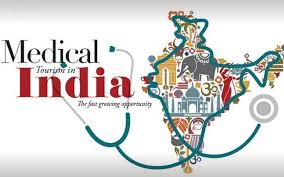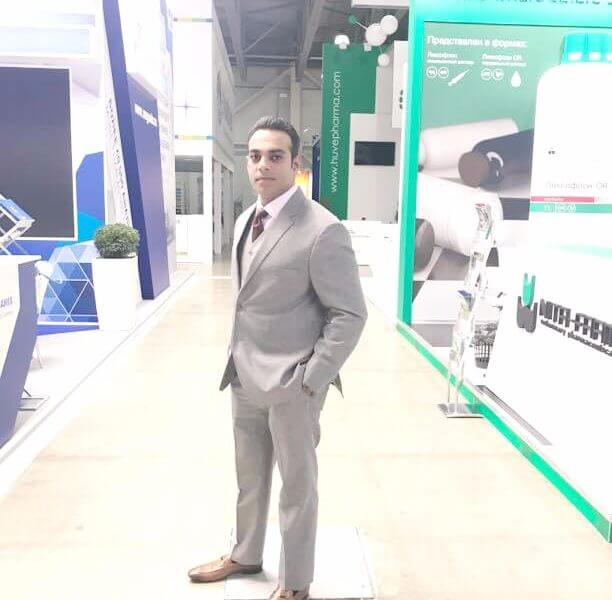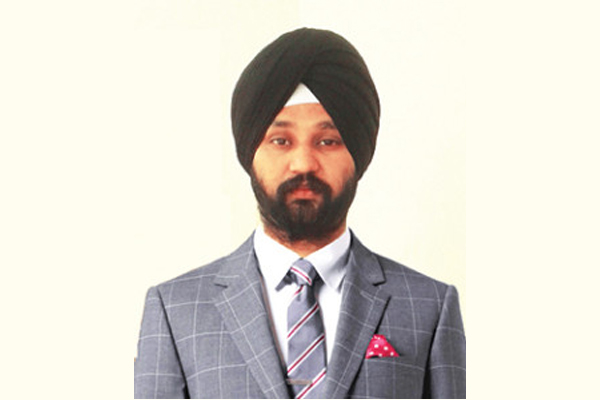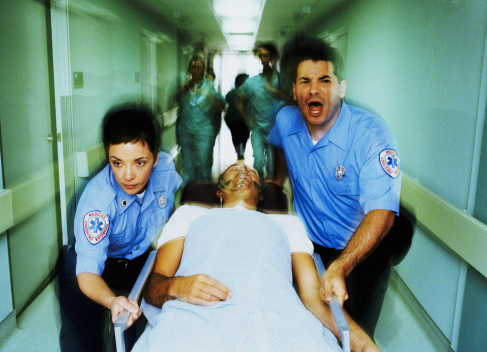

Ranjan MSICS Marker (RMM)
A new innovation — Ranjan MSICS Marker (RMM) — is designed to make topical flapless MSICS with greater astigmatic control a reality for beginners as well as mid level cataract surgeons, says Dr Pratyush Ranjan, Chief Ophthalmic Surgeon at Shaheed Bhagat Singh Eye Hospital, Bareilly, Uttar Pradesh, who is probably the youngest eye surgeon in India who has done 25,000 cataract surgeries and came up with this innovative device.

Serrated edges at the back, which fixes the globe during tunnel making.
If Indian health sector is to bridge the wide gaps in healthcare service delivery, it is imperative to focus on innovations — both technological and skill based. While the government can create a favourable policy framework, it comes down to every individual stakeholder in the health sector to disrupt and innovate to find new ways to value add and improve the way healthcare services are delivered in the country.

Cataract remains 51 per cent cause of blindness and 33 per cent cause of visual impairment worldwide according to the recent data (2010) of World Health Organisation (WHO). Ninty per cent of these people are present in poorer parts of the world like South Asia, South East Asia and Sub Saharan Africa, where cost remains a constraint for providing best treatment.
In the context of India, data shows that cataract causes an economic loss of at least Rs 8 lakh crore every year. The groups that are increasingly at risk of developing cataract include rural women, who typically cook using wood, crop residues and dried cattle dung.
In these communities blindness is associated with disability and mortality. It also has a profound societal and economic impact through loss of productivity of both the blind and those who care for them. Because of the significant reduction in life expectancy and quality of life for the blind, sight-restoring cataract surgery is undoubtedly one of most cost-effective medical interventions

In the context of India, data shows that cataract causes an economic loss of at least Rs 8 lakh crore every year. The groups that are increasingly at risk of developing cataract include rural women, who typically cook using wood, crop residues and dried cattle dung. They are more likely to have visually impairing nuclear cataracts in which the central portion of the lens turns opaque first.
Phacoemulsification (Phaco) is the surgery of choice for cataract in the developed world. Several studies have demonstrated quicker recovery and superior post surgery uncorrected visual acuity due to less post surgery astigmatism. Nevertheless there are no significant differences in visual rehabilitation, endothelial cell loss and complication rates when compared with manual small incision cataract surgery (MSICS).

The front surface showing corneal axis marker & Tunnel Marker.
Phaco is often available in the developing world to those cataract patients who can privately afford it. Compared with MSICS, Phaco requires a significant capital purchase and higher supply costs per case. Annual Phaco machine maintenance is an issue not only of cost, but also of readily available qualified technical support. In addition, there is a longer learning curve for new cataract surgeons to master Phaco, which is particularly challenging in the developing world given the poorer educational infrastructure available to ophthalmologists.
Finally, the advanced mature cataracts and brunescent hard cataracts that are so prent among poor populations are more challenging to extract with Phaco, and the complication rate is higher in most hands except in most skilled and experienced Phaco surgeons. Multiple studies reported the safety and efficacy of MSICS for complicated cases, such as brunescent and white cataract and cataracts associated with phacolytic and phacomorphic glaucoma.

Aligning pre-marked horizontal meridian of cornea with corneal axis marker of RMM.
For these reasons, MSICS has emerged as a viable and preferable alternative for many such settings. High quality, high volume cataract surgery using MSICS has been popularised in community eye care centers to effectively manage the large backlog of cataract blindness. It provides excellent outcomes at a fraction of the cost of Phaco and with shorter surgical time.
When price is not the constraint, Phaco remain procedure of choice for cataract extraction because of mainly three reasons:
1. Shorter hospital stay due to topical (drop) anesthesia
2. Shorter recovery time due to smaller size of incision and
3. Lesser need of prescription glasses post surgery due to smaller size of wound and careful wound construction taking account of steep axis and Surgeon Induced Astigmatism (SIA).

Making incision over conjunctiva and sclera (together) using tunnel marker of RMM as stencil.
Topical MSICS is being performed by many experts around the world with great results. MSICS with greater astigmatic control (comparable to Phaco) is seen with careful location, shape and size of incision.
Many studies have proven an ideal MSICS incision to be of following attributes. The anterior limit of the incision should be 2“3 mm behind the limbus, in Kochs incisional funnel to minimise post surgery astigmatism. The length of the incision (the distance between the two ends, but not along the curvature) varies from 5.5 to 6 mm. The frown shaped incision is best suited for MSICS because it induces least astigmatism with less tendency of wound edge separation as compared with chevron shaped.
Ranjan MSICS Marker (RMM) is designed to make topical flapless MSICS with greater astigmatic control a reality, for beginners and mid level cataract surgeons. It is designed to help in three critical steps of MSICS through its three different components.
1. The 2700 Serrated edges at the base: It fixes the globe during tunnel making obviating the need of superior rectus
bridle suture, obviating the need for peribulbar block & post surgery eye bandage.
2. Tunnel Marker: It helps create perfect frown shaped 6 mm incision, 2 mm away from limbus. The measured location, length and shape of incision will help surgeons to reproduce their results.
3. Corneal axis marker: It helps plan incision on steeper axis, taking care of pre existing astigmatism.
The Tunnel and Corneal axis marker reduces post surgery astigmatism by placing least astigmatic incision in Koch
astigmatic funnel on the steep angle taking care of both pre-existing and surgery induced astigmatism.
The degree & 1800 meridian is marked using bubble marker in sitting position. Using pre operative keratoscopic data (K1 & K2), steep meridian of the patient is identified.
After draping is done, the corneal axis marker is then aligned with pre marked meridians on the patients cornea and
steep meridian is marked.
The RMM is then rotated to align tunnel marker axis to steep axis of cornea. A perfect frown shaped incision of 6mm
length, 2 mm away from limbus is created using tunnel marker as stencil. The tunnel is created by stabilising the globe by mildly pressing the RMM on the globe, the serrated edges at the undersurface provides excellent grip obviating the need for toothed forceps or superior rectus bridle suture.
The video, titled Ranjan MSICS Marker (launch video, presented at AIOC 2017, Jaipur), which explains the use is available on the YouTube.
The flapless topical MSICS using Ranjans modifications (R-MSICS), shown in the video is easily possible with Ranjan MSICS marker, which also reduces surgery time, cost and stay at hospital making blindness elimination more economical.
(Dr Pratyush Ranjan is a postgraduate in Ophthalmology from Vardhaman Mahavir Medical College and Safdarjung Hospital, New Delhi. He has been trained at Freeman Hospital, Newcastle, United Kingdom, All India Institute of Medical Sciences (AIIMS) and Sitapur Eye Hospital, Sitapur (UP). He also runs a NGO, The Asoka Foundation to promote eye health and eradicate preventable blindness in the society.)
Be a part of Elets Collaborative Initiatives. Join Us for Upcoming Events and explore business opportunities. Like us on Facebook , connect with us on LinkedIn and follow us on Twitter , Instagram.












